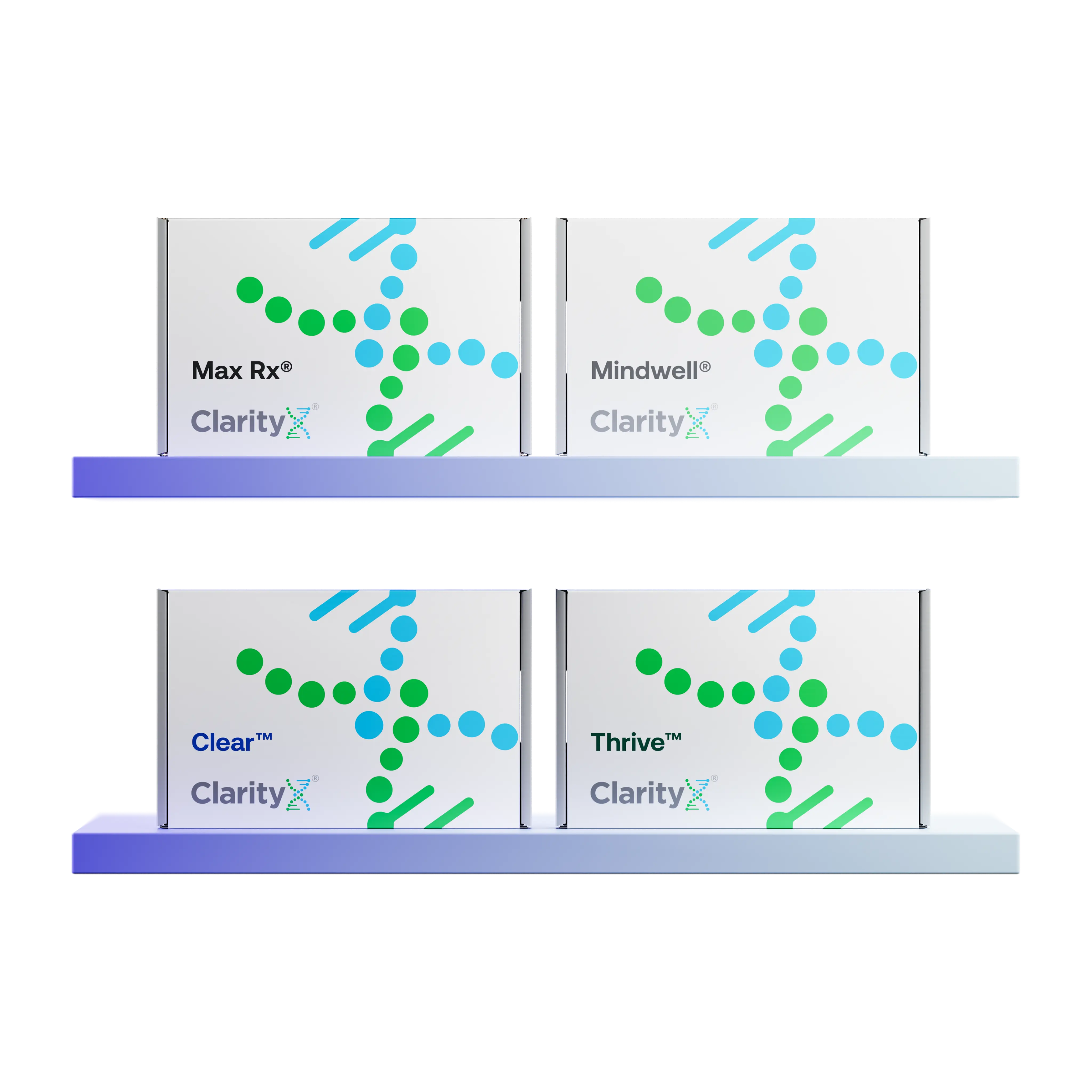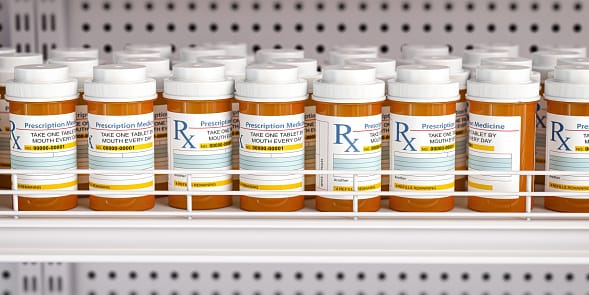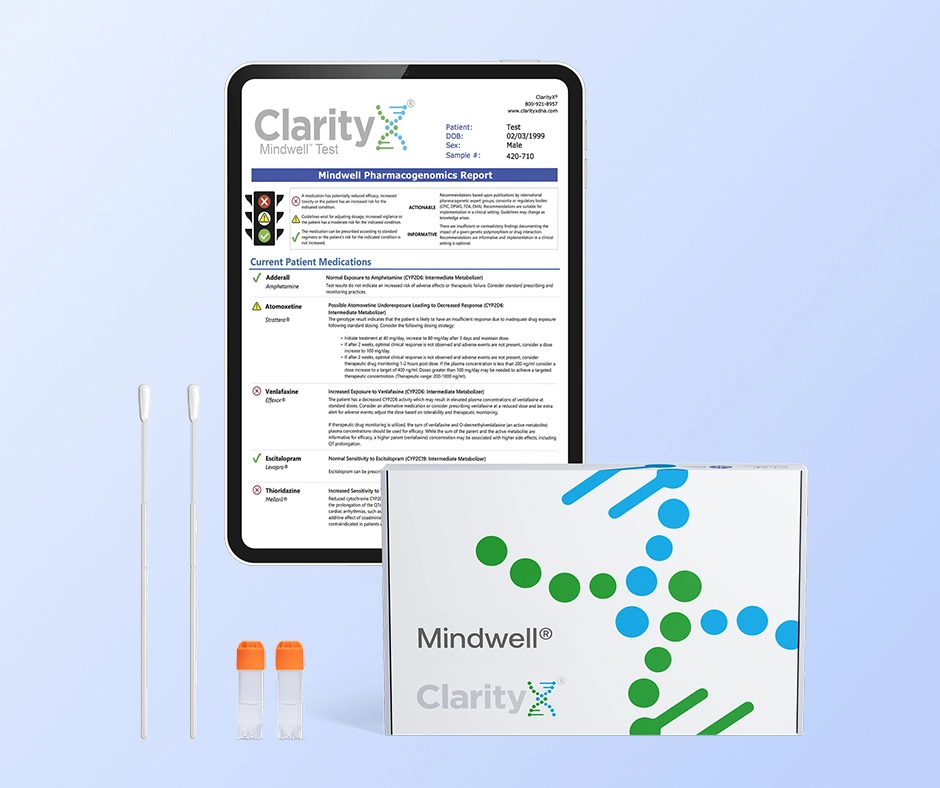Trazodone® and Xanax® are two medications commonly prescribed for mental health conditions, but they differ in some key ways. Understanding their similarities and differences can help individuals make informed decisions about their treatment options. In this blog, we will explore the key similarities and differences between Trazodone and Xanax, including their uses, mechanisms of action, side effects, potential interactions, risks of abuse, and whether it is safe to take them together.
Key Takeaways
- Trazodone helps regulate serotonin levels, similar to selective serotonin reuptake inhibitors (SSRIs).
- Trazodone is FDA-approved for depression but has become more commonly used for insomnia in recent years.
- Trazodone is not considered habit-forming and is not a controlled substance.
- Many providers recommend trazodone for consistent daily, longer-term use.
- Xanax is a benzodiazepine that works on GABA receptors to promote calm. These medications can be habit-forming and are controlled substances.
- Xanax is commonly used for the management of anxiety. Its calming effects can translate into benefits for falling asleep, particularly for individuals whose anxiety contributes to insomnia.
- Xanax is often recommended for short-term use. It offers symptomatic relief for anxiety as needed and can help bridge treatment gaps until longer-term therapy becomes effective.
- In some instances, they may both be recommended for use. Using them together increases the risk of side effects like drowsiness that extends into the morning or throughout the day.
- It’s important to talk with your provider about the timing of these medications if they have both been prescribed.
Understanding Trazodone and Xanax
Trazodone and Xanax belong to different classes of drugs and have distinct mechanisms of action. Trazodone is classified as an antidepressant medication, while Xanax is a benzodiazepine commonly used for anxiety. They both target specific neurotransmitters in the brain, but their effects on mental health conditions differ. Understanding how these medications work can provide insight into their potential benefits and risks.
What is Trazodone?
Trazodone is an antidepressant FDA-approved for major depressive disorder. It works by balancing serotonin levels in the brain, which plays a crucial role in regulating mood. Similar to selective-serotonin reuptake inhibitors (SSRIs) like fluoxetine or escitalopram, trazodone acts as a serotonin antagonist and reuptake inhibitor, meaning it blocks certain serotonin receptors and inhibits the reuptake of serotonin, allowing serotonin levels to remain elevated in the brain. This neurotransmitter modulation helps alleviate symptoms of depression.
In addition to its antidepressant properties, trazodone also has sedative effects, making it useful for addressing insomnia. Trazodone was initially used to help manage insomnia for individuals who were also managing depression. Over the course of the last 20 years, trazodone has become more commonly used for insomnia management regardless of whether individuals are managing depression. However, it is important to follow the dosage instructions provided by your healthcare provider to ensure safe and effective treatment.
What is Xanax?
Xanax, also known by its generic name alprazolam, is primarily prescribed for the management of anxiety disorder. It belongs to the benzodiazepine class of drugs and works by enhancing the effects of a neurotransmitter called gamma-aminobutyric acid (GABA) in the central nervous system. By increasing the efficiency of GABA neurotransmission, Xanax reduces neuronal activity, resulting in calming effects for individuals experiencing anxiety.
While Xanax is primarily used for anxiety, it can also be helpful in managing symptoms of panic disorder, another anxiety-related condition. It is important to note that Xanax is typically not recommended for long-term use due to its potential for physical dependence. It is most effective when used as part of a comprehensive treatment plan, including therapy and lifestyle modifications. Xanax is often recommended to help bridge treatment gaps while longer-term therapy becomes effective.
Common Uses of Trazodone and Xanax
Trazodone and Xanax are prescribed for different mental health conditions, although there is some overlap in their common uses. Trazodone is often used to address symptoms of depression, such as low mood, loss of interest, and hopelessness. Additionally, it can be effective in treating insomnia, both independently and as a secondary effect of antidepressant treatment.
Xanax, on the other hand, is primarily used to manage symptoms of anxiety disorders, including generalized anxiety disorder and panic disorder. It can provide relief from symptoms such as excessive worry, restlessness, and panic attacks. Because of its calming effects, some individuals may choose to use the medication to help them fall asleep. Both medications offer treatment options for individuals experiencing mental health conditions, but the specific symptoms they target differ.
Uses for Trazodone
Trazodone is commonly prescribed to address insomnia, as it can help improve sleep quality in some patients. It is often recommended for those who struggle with sleep disturbances due to major depressive disorder or other mental health conditions, but it has also become more commonly used as a stand-alone treatment option for insomnia. By promoting better sleep, trazodone can positively impact overall well-being and mental health.
Additionally, trazodone may be used off-label for other conditions. Some healthcare providers may prescribe trazodone to individuals with chronic pain (i.e., fibromyalgia), as it may offer sleep-inducing effects that can contribute to pain management. However, it is important to consult with a healthcare provider before taking trazodone for any off-label uses, as they can provide guidance specific to your individual circumstances.
Uses for Xanax
Xanax is primarily used to manage symptoms of anxiety disorders, including panic attacks, generalized anxiety disorder, and social anxiety disorder. It helps alleviate symptoms such as excessive worry, nervousness, and physical manifestations of anxiety. By enhancing the effects of GABA in the central nervous system, Xanax can produce calming effects and provide relief from the distress associated with anxiety. This calming effect lends itself naturally to helping some individuals fall asleep, particularly if anxiety is contributing to insomnia.
In some cases, healthcare providers may prescribe Xanax to individuals experiencing panic disorder, specifically targeting symptoms such as sudden and intense episodes of fear and anxiety. However, it is important to note that Xanax is not meant for long-term use due to its potential for physical dependence. It is best used in conjunction with therapy and other treatment options to address anxiety effectively.
How Trazodone and Xanax Work
Trazodone and Xanax work through different mechanisms of action, targeting specific neurotransmitters and receptors in the brain. Understanding how these medications function provides insight into their therapeutic effects and potential side effects. Let's explore the mechanisms of action for both trazodone and Xanax.
Mechanism of action for Trazodone
Trazodone's mechanism of action involves modulating serotonin, a neurotransmitter that plays a crucial role in mood regulation. It inhibits the reuptake of serotonin, preventing its reabsorption by neurons and effectively increasing levels of serotonin in the brain. Additionally, trazodone antagonizes certain serotonin receptors, which contributes to its antidepressant effects by balancing serotonin neurotransmission.
By altering serotonin levels and receptors, trazodone helps regulate mood and alleviate symptoms of depression. The medication's mechanism is complex and affects multiple neurotransmitter systems, making it an effective treatment option for major depressive disorder. However, as with any medication, trazodone's effects should be closely monitored under medical supervision.
Mechanism of action for Xanax
Xanax exerts its effects by enhancing the effects of GABA, a neurotransmitter that inhibits neuronal activity in the central nervous system. By increasing the efficiency of GABA neurotransmission, Xanax reduces excessive neuronal firing, producing sedative and calming effects.
The interaction between Xanax and GABA receptors plays a crucial role in its efficacy in managing anxiety disorders. By slowing down neuronal activity, Xanax helps individuals experiencing anxiety regain a sense of calmness and reduce symptoms such as excessive worry and restlessness. However, it is important to use Xanax under the guidance of a healthcare provider due to its potential for physical dependence and withdrawal symptoms.
Key Differences Between Trazodone and Xanax
Trazodone and Xanax differ in several key aspects, including their side effects, addiction potential, and class of drugs. Understanding these differences is crucial for individuals considering treatment options and making informed decisions about their mental health care.
Differences in Side Effects
Xanax and trazodone have different common side effects. Xanax may cause more drowsiness compared to trazodone, which can impact an individual's alertness and ability to perform certain tasks. On the other hand, trazodone may be more likely to cause dizziness and dry mouth compared to Xanax. Additionally, trazodone can potentially cause low blood pressure, while Xanax carries a risk of respiratory depression, which is why it should not be combined with opioid pain medications.
It is important to note that individual responses to medication can vary, and not all individuals will experience these side effects. Discussing potential side effects with a healthcare provider and reporting any concerning symptoms is crucial.
Differences in Risks and Precautions
Xanax carries a higher risk of physical dependence compared to trazodone, and sudden discontinuation of Xanax can lead to withdrawal symptoms. Additionally, Xanax may have more severe withdrawal symptoms compared to trazodone. Following healthcare provider guidance when discontinuing or adjusting medication doses is essential.
Trazodone, while less likely to cause addiction, has its own risks. For example, trazodone may cause more dry mouth compared to Xanax. It should also be used with more caution in individuals with a history of arrhythmia or who take other antidepressant medications. It is important to consult a healthcare provider regarding potential risks and precautions associated with each medication to ensure safe and effective treatment.
Key Similarities Between Trazodone and Xanax
While trazodone and Xanax have their differences, they also share some key similarities. Both medications are used as treatment options for mental health conditions, and each medication targets specific symptoms related to anxiety, depression, and sleep management. Understanding these commonalities can help individuals better understand their treatment options and potential benefits.
Similarities in Uses
Trazodone and Xanax are both prescribed to address symptoms of mental health conditions, specifically symptoms of depression and anxiety. They can be effective treatment options for individuals experiencing symptoms such as low mood, anxiety, panic attacks, and sleep disturbances. Trazodone offers benefits for depression management, while Xanax supports individuals in managing anxiety. Both medications can be used to support sleep.
If both medications have been prescribed, it’s critical to talk with your provider about their intended timing. Xanax is relatively short-acting and can be taken as needed for anxiety symptoms. This makes it an effective treatment option during the day if symptoms arise. Trazodone is generally only recommended in the evening. Your provider may suggest separating trazodone from your last dose of Xanax by at least 4–6 hours or avoiding taking one medication if the other has already been used.
Similarities in Side Effects
Both trazodone and Xanax share some common side effects. For example, drowsiness is a potential side effect of both medications and can impact an individual's alertness and daily functioning. Additionally, dry mouth may occur in some individuals taking trazodone or Xanax. By being aware of potential side effects, individuals can communicate effectively with their healthcare provider and address any concerns that may arise during treatment.
Potential Interactions of Mixing Trazodone and Xanax
When considering treatment options, it is important to be mindful of potential drug interactions, especially when combining trazodone and Xanax. Both medications affect the central nervous system, and combining them may result in intensified effects, such as sedation, impairment, and changes to heart rate.
It is crucial to consult with a healthcare provider before combining trazodone and Xanax or making any changes to medication regimens. They can provide guidance specific to individual circumstances, inform individuals of potential risks, and help optimize treatment plans for mental health conditions.
Increased Side Effects
Using trazodone and Xanax together may increase the likelihood of certain side effects. For example, dizziness and drowsiness may be more pronounced when combining these medications. Additionally, the potential for respiratory depression, a condition characterized by reduced breathing rate, may be higher when trazodone and Xanax are taken concurrently. For the most part, taking these medications at the same time to support sleep is not recommended.
It is important to report any concerning side effects to a healthcare provider and seek medical attention if symptoms become severe or worrisome. Proper communication and monitoring are essential for safe medication management when using trazodone and Xanax together.
Risks of Trazodone and Xanax Abuse
Abusing trazodone and Xanax can have detrimental effects on both physical and mental health. Xanax has the potential for addiction, as it can lead to physical dependence when used improperly or at high doses. Dependence on Xanax can result in withdrawal symptoms, which can be uncomfortable and, in severe cases, life-threatening.
Trazodone is more likely to cause side effects when it is taken at higher doses. It is crucial to use trazodone and Xanax as prescribed by a healthcare provider and to seek addiction treatment if abuse or dependence is suspected. Early intervention and appropriate treatment options can help individuals overcome addiction and minimize associated risks.
Contraindications and Overdose
Trazodone and Xanax have contraindications when taken with certain medications, and it is important to inform healthcare providers of all medications and over-the-counter products being taken to avoid potential adverse effects. Additionally, overdosing on trazodone or Xanax can have serious consequences, and emergency medical attention should be sought if an overdose is suspected.
Pharmacogenomic Testing
Pharmacogenomic testing is a precision medicine tool that analyzes your DNA to predict how your body will process and respond to specific medications. By examining genetic variants primarily those affecting liver enzymes the test reveals if you are likely to metabolize a drug too slowly (increasing the risk of severe side effects) or too quickly (making the medication ineffective).
This genetic insight allows doctors to move away from a "trial and error" prescribing method, helping them select the right drug and the right dose from the start to maximize treatment success while minimizing adverse reactions.
Is it safe to take Trazodone and Xanax together?
Combining trazodone and Xanax may pose risks, particularly in terms of increased sedation and potential drug interactions. It is crucial to consult with a healthcare provider before taking trazodone and Xanax concurrently to assess potential risks and benefits based on individual circumstances.
In some circumstances, the two medications may both be recommended for use. For instance, an individual managing anxiety and insomnia may be instructed to use Xanax as needed for anxiety during the day and trazodone before bed for sleep. The potential for increased drowsiness increases if the medications are used closely together, and this drowsiness can extend into the morning or throughout the day.
A healthcare provider can provide guidance specific to your needs, such as adjusting dosages, monitoring for side effects, and assessing potential interactions with other medications. They can help determine the safety of concurrent use of trazodone and Xanax and develop a treatment plan that optimizes the benefits of each medication while minimizing potential risks.
Conclusion
In conclusion, understanding the key differences and similarities between Trazodone and Xanax is crucial for making informed decisions regarding their uses and potential interactions. While both medications serve distinct purposes in managing various conditions, it's essential to be aware of their mechanisms of action, side effects, and risks associated with abuse. Always consult a healthcare professional before considering taking Trazodone and Xanax together to prevent potential adverse effects and ensure your well-being. Your health and safety should always be the top priority when it comes to medication management.
References:
https://www.ncbi.nlm.nih.gov/books/NBK470560/
https://dailymed.nlm.nih.gov/dailymed/drugInfo.cfm?setid=388e249d-b9b6-44c3-9f8f-880eced0239f
https://www.ncbi.nlm.nih.gov/pmc/articles/PMC5842888/
https://bmcmusculoskeletdisord.biomedcentral.com/articles/10.1186/1471-2474-11-204






